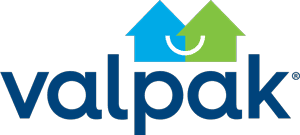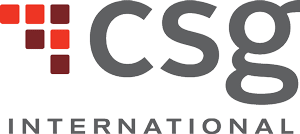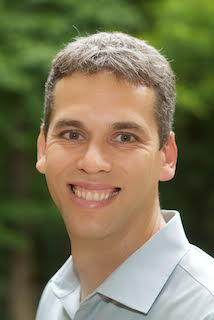
“With a proven framework, we can deliver solutions much faster and with less effort. SAFe® defines the roles, teams, activities and artifacts to apply Lean and Agile principles at enterprise scale, and provides outstanding training and coaching materials to increase our chance of success.”
—Peter Vollmer, Distinguished Technologist at Hewlett Packard Enterprise (HPE)
Challenge:
HP teams had experimented with Agile methods for years, but efforts were limited to individual teams with mixed results.
Industry:
Information Technology, Software
Solution:
- SAFe®
- HPE Agile Manager
- HPE ALM
Results:
- Teams run iterations within a number of weeks rather than months.
- Typically, teams complete sprints within two weeks.
- The company noticed a 20 percent drop in defects.
- Company leaders are backing Agile globally as means of meeting strategic business goals.
Best Practices:
- Start small – Start with one or two teams to reduce risk and create evangelists that will spread the news.
- Use a light hand – Don’t force teams to go Agile but rather let evangelists share that Agile is fun and delivers better results.
- Educate, educate, educate – Establish change agents and continuously educate. Many may assume they know what Agile is all about, but in reality may not.
Introduction
Created as a result of the split of Hewlett Packard into two companies in late 2015, the newly formed Hewlett Packard Enterprise (HPE) helps organizations adapt to modern digital demands—to create secure, cloud-enabled, mobile-friendly infrastructures. HPE Software, one of four divisions within HPE, drives a significant percentage of the company’s overall profit.

At HPE, business units span multiple continents, from the headquarters in Palo Alto, CA to Europe and the Asia Pacific. One product team may include members in up to five different locations.
The company’s journey to Agile began as early as 2001 when some HP teams began iterative development independently. In the years that followed, they went on to experiment with a mix of XP, Kanban and Scrum. However, their efforts, while approaching Agile in business, were limited to individual teams with mixed results.
To scale Agile adoption beyond a few scattered teams would require a more formalized effort and a methodical approach to ensure business continuity.
“We needed to respond more quickly to user requests and environmental changes, and reduce the cost of software development using traditional methodologies such as waterfall,” says Peter Vollmer, Distinguished Technologist at HPE. “Yet we could not risk compromising core business processes and KPIs.”
A Proven Framework for Faster Delivery
When team leaders evaluated the variety of Agile methodologies, they found the measured approach they needed in the Scaled Agile Framework® (SAFe®).
“With a proven framework, we can deliver solutions much faster and with less effort,” Vollmer says. “SAFe defines the roles, teams, activities and artifacts to apply Lean and Agile principles at enterprise scale, and provides outstanding training and coaching materials to increase our chance of success.”
HPE began SAFe Agile expansion with a “coalition of the willing,” Vollmer says. The first to raise their hands, a team based in Fort Collins, Colorado, with members in India, became the first to begin SAFe training and training. With the Colorado team underway, a second-team at HPE’s headquarters in Sunnyvale began as well.
Beyond the Classroom
To help teams apply SAFe beyond the classroom, HPE provided some teams with access to a trainer to educate and coach them through the process. Coaches provide feedback to teams, ask questions and help them find the right answers based on context, culture and environment. To coach the first two teams, and now others, Vollmer ramped up on SAFe through a SAFe Program Consultant (SPC) course.
Success with scaling Agile at HPE has hinged on education and ensuring that team members understood SAFe clearly, including taking the effort to get on the same page regarding terminology. “We found a great deal of misunderstanding when it comes to Agile and its principles, which is why teams often struggle with accepting the change,” Vollmer says. “In order to get the most out of Agile practices, each team should have a trainer who educates and coaches them throughout the learning and adoption process.”

20% Defect Drop
Early SAFe users evangelized their experience, increasing engagement and adoption. To date, several hundred team members have attended SAFe training and achieved certification. Those actively applying Agile methods numbers in the thousands, based on usage of an HPE-developed onboarding portal (Agile Manager), and continues to grow. Between 2014 and 2015, the number of registered users jumped by 50 percent as the effort gained momentum.
Though still adopting SAFe more broadly, HPE already sees an impact. “Our teams run iterations within a number of weeks rather than months, all while executing robust delivery processes,” Vollmer says. And with the change, teams run sprints in two weeks instead of four.
As SAFe practices expanded, the company also noticed a 20 percent drop in defects, as measured by its own defect-tracking application. Within the system, HPE can easily measure key performance indicators, including customer-encountered defects – insight that contributes to customer satisfaction and delivering higher-quality releases on schedule.
“Like most of our customers, HPE Software must adopt Enterprise Agile practices,” says Jerome Labat, CTO of HP Software. “Working closely with our HPE ALM (application lifecycle management) and AGM (Agile Manager) engineering teams allows us to continuously improve our product, scale out our software operations while keeping our costs under control. We‘ve seen tremendous benefits such as efficiencies, improved quality, and a reduction in time-to-market windows.”
Next Steps

So far, HPE has run four Agile Release Trains (ARTs), all in one business unit. In the coming months, another business unit in Sunnyvale will quickly launch another ART.
Next, HPE Software targets training an additional thousand people on SAFe, which includes all R&D and product management roles. Toward that effort, HPE will establish an Agile transformation team and deploy up to three SPC-certified change agents in each major geographic area.
All these steps underscore the increasing importance of scaling Agile in meeting HPE’s broader strategic business goals.
“We have to get the whole of Hewlett Packard Enterprise, from a development perspective, adopting the Agile methodology, so that we can go faster and deliver more to our customers’ expectations,” said Martin Fink, CTO of Hewlett Packard Enterprise.
Share:
Back to: All Case Studies
Suggested Case Study: Amdocs


